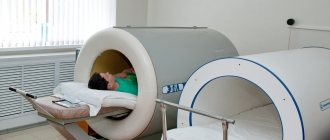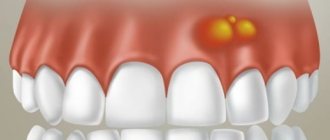Wisdom tooth removal Why complications often arise after wisdom tooth removal How to protect yourself from complications Types of complications Pain after wisdom tooth removal Temperature after wisdom tooth removal Bleeding after wisdom tooth removal Hematoma Swelling after wisdom tooth removal Other symptoms How long will it take for gums to heal after wisdom tooth removal
The appearance of wisdom teeth is not the most pleasant process in the human body. They usually appear after the age of 18. There is a lot of controversy surrounding the appearance of these teeth; why do they appear in some people, while in others they never appear? Should they be removed and why?
The structure of the oral cavity and dental treatment are always carried out on an individual basis, so first, before removing a tooth, you need to consult a dentist. But statistics say that in 96% of people these teeth still need to be removed.
Wisdom tooth removal
There are many reasons for removal, but we will not delve deep into medicine and use many incomprehensible terms. We will try to explain everything in simple language.
Teething is always accompanied by pain, so it is often anesthetized. In addition, the evolution of the human body leads to the fact that new teeth, which suddenly appear after adulthood, are not needed. A person simply does not use them, but they later cause discomfort and unpleasant sensations.
Often a situation arises when you do not even know about the existence of a wisdom tooth. It begins to grow somewhere deep and is located under the gum. Afterwards, when it becomes crowded there, he begins to move his neighbor. In this case, a person feels pain somewhere in the temples, and therefore can confuse it with a headache.
But still, many doctors agree that it is advisable to remove wisdom teeth before they begin to hurt and cause harm to others. Otherwise, you will have to remove not only the new tooth, but also the one next to it. Therefore, in such cases, wisdom tooth removal is an inevitable process.
Why complications often occur after wisdom tooth removal
The statistics that dental clinics offer us show that in 30% of all cases, inflammatory processes in the socket start after extraction. Neighboring teeth are affected only in 3% of cases, so there is no point in worrying about additional pain.
There are several reasons for inflammation:
- the removal operation itself is complex;
- the tooth is surrounded by many soft tissues that are easily damaged;
- moving soft tissues around the tooth lead to loss of the clot, making inflammation inevitable.
Inflammations often occur due to the unprofessional approach of the surgeon. There are common cases when a doctor tries to remove a tooth using the most primitive method for several hours, although the surgical approach takes much less time.
You just need to cut the gum and remove the tooth in several parts. It only takes twenty minutes. This way the doctor saves his time and torments the patient less.
Often the cause of inflammation is the use of a drill. The tip there cannot cool on its own, which means burns from the heated device remain on the soft tissues around the tooth. After this, pain appears in the socket of the extracted tooth, which is also accompanied by suppuration.
Much depends on the individual characteristics of the patient’s body, but everything can work in combination.
How to protect yourself from complications
All your actions depend on the degree of complications and how acutely you feel the pain. In cases of surgical intervention, which is subsequently accompanied by purulent inflammation, doctors recommend following this plan:
- Antihistamines are prescribed to combat allergic reactions. They help remove some of the swelling from the tissues near the cheek. In addition, they stimulate more active work of analgesics, which also have to be used. They take the drugs once a day in the evening.
- Analgesics act as painkillers and have anti-inflammatory properties. This includes medications that contain ibuprofen, ketoprofen and others. You should consult your doctor in advance about their use. Because you can drink them only when really necessary.
- Antibiotics should only be taken in severe cases of inflammation. For example, if the tooth was cut out during inflammatory processes. Then a bone wound is formed, the pain from which intensifies.
In any case, the doctor should monitor your well-being and prescribe you treatment after wisdom tooth removal. And all medications, dosages and the number of times you take medications must be discussed individually.
You cannot do the following after surgery:
- take a hot bath for at least two more days;
- sleep or just lie on the side of this tooth;
- overwork your body with physical activity;
- visit the sauna, steam bath or swimming pool for another week;
- touch the wound with your tongue or other objects;
- When applying sutures, you need to be careful with active facial expressions.
In addition, analgin is strictly prohibited during wound healing. Because it thins the blood, and subsequently you get bleeding and a greater likelihood of bruising.
How to relieve pain?
If pain and other symptoms described above occur, you should go to the dentist. Taking painkillers and anesthetics will help relieve pain for a while, but getting rid of the pathology requires complex treatment, which often includes surgery. In the presence of retention, dystopia and other anomalies, third molars are usually removed, and the patient undergoes restorative therapy. If there is no way to get professional help, folk remedies can help relieve the pain a little: a decoction of chamomile, sage, oak bark, hyssop or lemon balm.
Types of complications
The attending physician's prescriptions directly depend on the symptoms that appear in patients. Again, according to statistics, every fourth person who has a wisdom tooth removed experiences complications.
Symptoms that confirm the presence of inflammatory processes are as follows:
- spontaneous pain that is not tied to anything;
- unpleasant sensations from hot and cold food or liquid getting on the socket;
- soft tissue swelling;
- painful to swallow;
- temperature;
- bleeding;
- jaw hurts after wisdom tooth removal;
- unpleasant odor coming from the hole;
- hematomas appear on the face;
- it is painful or difficult to open your mouth.
The appearance of such symptoms, of course, does not indicate one hundred percent occurrence of complications, but you still need to pay attention to this and begin treatment. Now let's take a closer look at each of these problems.
We answer frequently asked questions from patients -
If you have a wisdom tooth removed: what to do after removal, what to rinse with, how quickly the hole will heal and when it will be possible to treat your teeth... We answer all questions separately.
How to rinse your mouth after wisdom tooth removal -
It is best to rinse your mouth after wisdom tooth removal with the antiseptic Chlorhexidine. This drug is sold in every pharmacy and costs only about 30 rubles per 100 ml bottle. Please note that you can only rinse your mouth slowly, because... Strong rinsing can cause a blood clot to fall out of the socket of the extracted tooth. The latter will lead to the development of inflammation.
How long does it take for gums to heal after wisdom tooth removal?
How long it takes for the gums to heal after wisdom tooth removal depends on the complexity of the removal. Typically, you must wait 1 week to begin treatment after wisdom tooth removal. But after a complex removal, the gums may take longer to heal (up to 10-14 days), which will depend on the degree of traumatic removal. If inflammation occurs in the hole, healing may take 20-30 days. We hope that our article on the topic: Wisdom tooth removal, how much it hurts, turned out to be useful to you!
Sources:
1. Higher prof. the author's education in dentistry, 2. Based on personal experience as a dental surgeon, 3. National Library of Medicine (USA), 4. “Pathology of wisdom teeth eruption” (Rudenko A.), 5. “Qualified removal of third molars” (Asanami WITH.).
Pain after wisdom tooth removal
The pain after wisdom tooth extraction depends on the level of trauma of the process itself. It is normal for mild pain to appear and gradually decrease.
Typically, unpleasant pain should subside within two to three days. Sometimes it is acceptable for a person to feel pain for another three to five days. If you do not go to your dentist for a follow-up examination on time, the illness may drag on for several weeks.
The development of inflammation in the tooth socket is called alveolitis. There are several reasons for its appearance:
- the operation was traumatic for the dental cavity;
- there are bone fragments left in the hole;
- the tip of the drill was hot, causing burns on the gums;
- the mucous membrane over the wound was not sutured;
- An antibiotic was not prescribed on time after a complex removal process.
In principle, there is a high probability of no pain if the doctor has sutured the hole. If he did this even after a simple and uncomplicated removal, then the likelihood of pain is almost zero.
Galvanic syndrome
This is the case when physics interferes with physiology. Painful sensations are caused by microscopic current discharges, which have an extremely unpleasant effect on the vulnerable mucous membrane of the mouth. The syndrome occurs due to the fact that in your mouth there are fillings and other dental structures that contain many metals and alloys that are widely used in modern dentistry. An artificial tooth contains a lot of conductive materials and as a natural result: the current irritates the delicate mucous membrane, which leads to the development of inflammation, and this process can spread further to the throat. Eliminating this problem is quite simple, although it is associated with material and aesthetic losses. It is necessary to remove the current conductor - the dental structure. Experience shows that the pain disappears almost instantly, although the inflamed tissues will need time to recover. Well, there is a need to replace the removed structures. Usually, in this case, the doctor prescribes you a course of restorative immunotherapy to minimize all the negative effects of irritants. And problems with missing teeth will be solved by ceramic materials. They are beautiful, natural and have no problems with conductivity.
Temperature after wisdom tooth removal
A fairly common problem is fever. In some cases, this is considered quite normal, especially if it happens on the first day. It is acceptable if the temperature does not exceed 38 degrees, and the next morning it returns to normal.
You should definitely consult a doctor if the temperature does not decrease the next day, but only increases and purulent discharge appears. This state of affairs only indicates active inflammatory processes in the body.
If the removal was difficult and difficult, then temperature is also a completely natural human reaction. However, it should still, if not disappear, then at least noticeably decrease the next day.
Bleeding after wisdom tooth removal
Bleeding is rare and usually stops immediately. But if there is a large vessel next to the damaged hole, then under its pressure it can last much longer. Most often, bleeding begins while the patient is sitting in the dentist's chair. Then the doctor simply sutures the wound with a special suture material or places a special sponge with a hemostatic effect in the hole.
But if bleeding begins after the patient leaves the doctor, then it is better to contact him again. Contact him by phone and discuss your plan of action.
Although more often doctors insure themselves in advance and put several stitches on the wound for prevention. This is useful because with a suture the wound heals much faster. This action on the part of the dentist is especially useful if the patient has developed hypertension. It is worth discussing such issues in advance even before the removal process in order to avoid unpleasant consequences.
If you have to stop bleeding from a hole at home, there are several ways to do this:
- make a tampon from a sterile bandage, apply it to the wound and bite hard;
- apply ice (or something cold) to the side of the face where the tooth is located, you need to hold it three times for five minutes with a break of 10-15 minutes;
- find out your blood pressure, perhaps this is the cause of bleeding;
- a hemostatic sponge will come to the rescue if a regular homemade tampon does not help you - they are sold in every pharmacy.
But if these methods do not help you stop the bleeding, then you will definitely have to see a doctor or even call an ambulance.
Hematoma
Hematomas usually appear due to damage to some vessel that passed through the soft tissues and was affected. In fact, it is not the doctor’s fault, because during anesthesia he cannot notice small vessels in the gums or other soft tissues.
As a result of such damage, a characteristic cyanosis appears even after a few days. Gradually it goes away on its own. But in some cases it is still necessary to intervene in the development of the hematoma. Often after tooth extraction, these bruises fester.
This usually happens the very next day, accompanied by a hematoma, swelling on the cheek, pain and low fever. In this case, you need to consult a doctor, because the suppuration can be removed only with the help of a special incision in order to release the pus. Self-medication will only be harmful here, so be sure to consult a doctor.
When to worry and go to the doctor
Did your temperature rise after going to the dentist and continues to increase? Need a doctor! Most likely, the immune system is not working at full strength, and the process of restoration and healing of damaged tissues is not fully occurring. This means that the wound will take a long time to heal, and serious complications may arise. In addition, when you open your mouth for a long time, the mucous membranes dry out, which causes a sore throat. If the pain gets worse, visit the dentist.
When an impacted wisdom tooth is removed, bleeding from the socket often increases after the operation after a few days. A trip to the dentist is a must. This symptom may indicate an infection of the wound or the presence of fragments in the hole. It happens that the hole becomes dry, which requires applying balls of medicinal ointment to it. Patients with alveolitis should not hesitate. In such cases, the dentist will clean the wound of pus, then an antiseptic will be applied.
In addition to the dentist, if discomfort occurs in the ear or larynx, you should consult an ENT doctor so as not to miss pathologies in the functioning of these organs. We must not forget about preventive measures. Every 6 months you need to visit the dental office to prevent oral problems from developing. It is important to clean your crowns regularly twice a day. Only high quality toothpaste should be used. During the period of removal of chewing organs, it is useful to exclude rough and hard foods from the menu so as not to injure the wound.
Swelling after wisdom tooth removal
Removal of a wisdom tooth is accompanied by swelling. Such processes occur quite often after complex tooth extraction. But with simple and quick operations, this really rarely occurs. The cause may be the human body itself: if he has a lot of subcutaneous fatty tissue on his face. Such swelling usually appears the morning after the day of removal.
It is a normal reaction of the body if swelling appears immediately and gradually develops. It reaches its maximum the next morning, but begins to disappear after a day or two. If in addition to this no other symptoms appear (fever or bleeding), then everything is quite normal and there is no cause for concern.
The appearance of edema is associated with the structure of soft tissues. Because there are usually many vessels passing through the upper wisdom teeth. Therefore, if they are accidentally damaged, swelling on the face results. There is nothing surprising in cases where tooth extraction was immediately accompanied by complications.
You should consult a doctor if swelling regularly increases over the next few days. In addition, other unpleasant consequences may appear:
- pain increases;
- temperature rises;
- painful swallowing appears;
- it is painful and difficult to open your mouth.
All this indicates severe suppuration and an active inflammatory process. If you feel at least one of these signs, then you definitely need to see a doctor and be examined by him.
In order to prevent swelling, you need to take some antihistamines in advance. You need to take it two to three days after tooth extraction before going to bed. The most common of these drugs is Suprastin. Because it protects you not only from allergic reactions, but also has an anti-edematous effect.
What to do if a tooth hurts during pregnancy?
Against the background of toxicosis and a general decrease in immunity, the mother’s body becomes especially vulnerable to the effects of pathogenic bacteria. Unfortunately, wisdom teeth do not warn in advance about their appearance. If it begins to erupt during pregnancy, standard treatment methods are often not suitable. This is especially true when taking most antibiotics and painkillers. If the patient does not have serious complications during teething, it is recommended to use gentle means (Cholisal, Kalgel, etc.) to eliminate inflammation. Many experts allow the use of paracetamol. In the most severe cases, surgical intervention and tooth extraction are performed: this is recommended to be done in the second trimester.
Other symptoms
Painful sensations may appear even before tooth extraction. Often wisdom teeth themselves lead to other diseases. Among them:
- pericoronitis - inflammation around the tooth, which leads to the formation of a gum pocket;
- caries;
- movement of other teeth, which is accompanied by pain;
- cyst formation;
- compression of the branches of the trigeminal nerve.
It is because of such complications, which ultimately lead to painful tooth extraction, that other symptoms of inflammation appear. You need to take care of the issue of wisdom tooth removal in time, then you can prevent at least some of the complications.
We have already dealt with inflammation of the gums, which is called alveolitis. There are several other types of disease after such operations. The first of them is a cyst. This is a growth over the tooth that contains fluid inside. You need to consult a doctor whether to remove it or not. Because in different situations under the influence of various factors, it is necessary to make a decision individually for each patient.
Sometimes flux may appear - this is an inflammation of the periosteum. It appears in cases where the infection penetrates much deeper into the gums. To obtain a more accurate diagnosis, you need to take an x-ray, and the treatment regimen is again set individually depending on the area of inflammation.
Symptoms such as an unpleasant odor from the wound, painful swallowing and difficulty opening the mouth are side effects of swelling or suppuration. In case of such manifestation of inflammation, you need to consult a doctor. Otherwise, you will not be able to cure it.
Many problems can be avoided by suturing the socket of an extracted tooth. If the doctor has not done this himself, you can ask him about it. Although this action does not always solve all problems.
To prevent the appearance of pain and the development of inflammatory processes, you can rinse your mouth with special antiseptics. But even in this case, you need to take a responsible approach to treatment. Overly frequent rinsing and excessive use of such medications can ultimately lead to the formation of a clot in the socket. And this, in turn, leads to a new round of inflammation.











